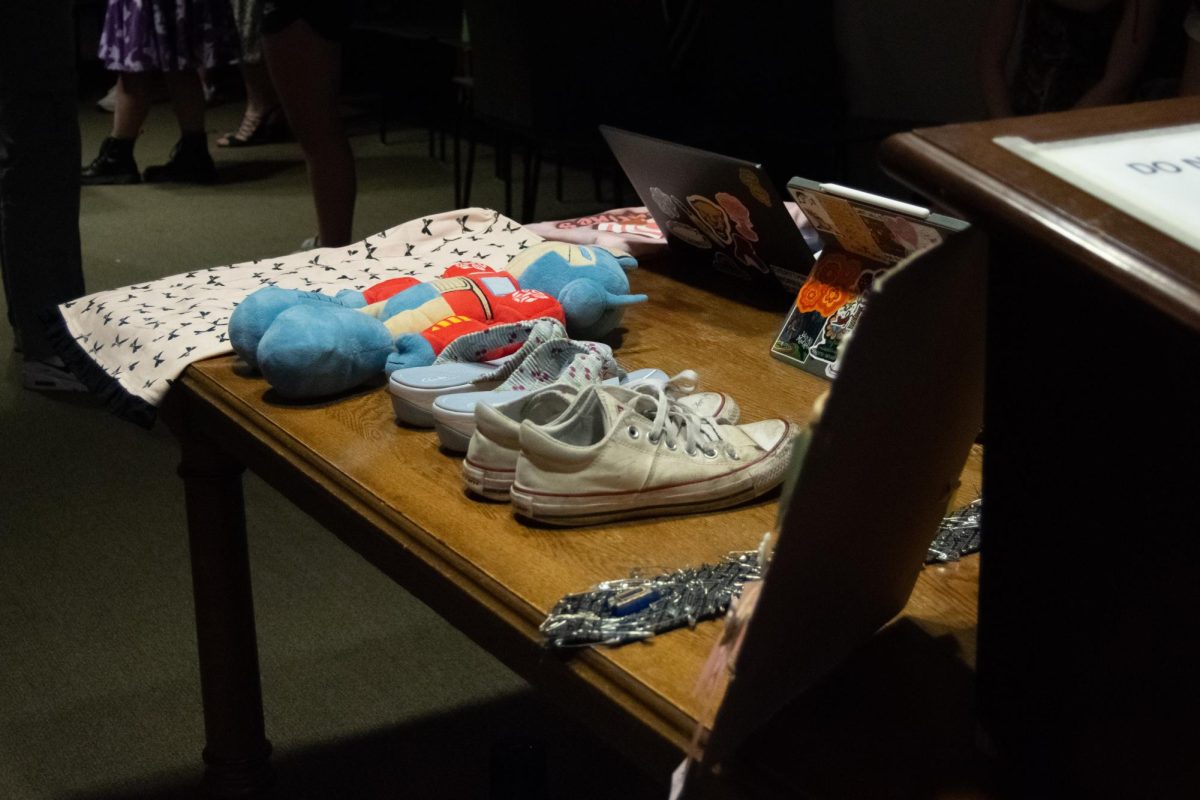“Camp” took social media by storm when the organizers of the 2019 Met Gala chose Susan Sontag’s essay “Notes on Camp” as its theme. On March 4, it took on Pitt’s campus with a one-day-only student-crafted exhibit at the Cathedral of Learning.
According to Sontag’s essay, camp is “a certain mode of aestheticism. It is one way of seeing the world as an aesthetic phenomenon.” Camp is “good because it’s awful,” she wrote, using examples such as the ballet Swan Lake, old Flash Gordon comics and “certain turn-of-the-century picture postcards.”
Camp and its visibility were the main themes of the exhibition at the Cathedral. The exhibition was part of a midterm project for the course Sexuality and Representation, led by English literature lecturer Jesse Jack. Jack said the department restructured the course this semester, allowing for some experimentation.
“This semester I decided that I was going to experiment a bit and revise the whole course schedule,” Jack said. “Those revisions were designed to do some things — we wanted to make sure those conversations about sexuality, queer and trans identities, those questions did not happen only in the ivory tower.”
The re-creation of the course was based on the experimentation, questions and observation of the student’s narratives, or even counternarratives.
“I wanted to focus on the production of counternarratives, to give students the agency to write their own counternarratives, and to focus on experiential learning,” Jack said.
Enchanted by the lively conversation and bright computer screens, students, professors and visitors filled room 501 of the Cathedral. The room was divided into tables — one was dedicated to music and sound, the second to movies and the third to images. Each computer had headphones, when necessary, and a text panel with the student’s description of the object, including their thoughts on “what makes something camp.”
On the music table, nothing fell short of ridiculous — from Brown Eyed Girls’ “Warm Hole” and its video to metal odes to the murderous doll Chucky. Rin Tena, a first-year digital narrative and interactive design major and a member of the class, selected their exhibition object — the music video for There Might Be Giants’ “Birdhouse in Your Soul.” They said they grew up with the song and even as a child its absurdity was obvious.
“I actually grew up with TMBG. I remember as a kid watching this music video for the first time and being like, ‘This is absolutely insane.’ It didn’t make any sense,” Tena said. “So when I heard about this camp assignment, that was the first thing I thought of.”
John Evans, a junior English literature and secondary education major, chose the music video for George Michael’s “Outside,” a gaudy performance and reaction to his arrest in 1998, for the midterm project. While failure seems to be one of the keywords when defining camp, Evans said “Outside” was not a failure as a song.
“[The music video] might not have been necessarily a failure, but it does not focus on content, but rather the aesthetic of being yourself and just having fun,” Evans said.
On the movie table, the films went from the ‘80s to the 2000s, from high-budget films to student-level works. One of the computers featured a contemporary film, “Wonka.” Directed by Paul King and starring Timothée Chalamet, the 2023 movie recounts the story of Willy Wonka, the chocolatier from Roald Dahl’s “Charlie and the Chocolate Factory.” The movie received good reviews, yet Jack said what made it seem so camp was its advertisement, from trailers to posters to experiences.
“The sheer power of advertisement has normalized it to the point that it has failed to be as exciting as it could have been,” Jack said.
A lot of audience members questioned the campiness of some of the objects at the exhibition, such as “Jennifer’s Body,” the cult-favorite film starring Megan Fox as a man-eating demon. Jack and her students knew that the materials would naturally lead the public to those critical questions.
“I was very minimal in the kinds of feedback I gave to students when they proposed their objects to me,” Jack said. “For [other] students, I was pretty transparent with the fact that this might be a harder sell, and prepare yourself for a conversation about whether or not this is camp.”
The argument aims not to classify the film, image or music between the binary of camp or not camp, but to allow the discussion to exist, Jack said.
“If eventually, that conversation leads to it not being camp, at least the discussion happened. We are still interrogating what it means to be a failure,” Jack said.
While the assignment for the exhibition allowed students to explore new topics, Jack wanted to go beyond addressing the feelings that bubble up within students when they hear “gender studies.”
“My goal is to not only to help students mitigate and wrestle with biases that one might have when entering a class about queer and trans issues, but perhaps even … do some healing around shame that they might have around their sexualities and bodies,” Jack said.
The exhibition was graded pass or fail, in honor of camp’s true meaning — to fail is to succeed.
“If you’re being creative, then you are doing good work,” Jack said.



